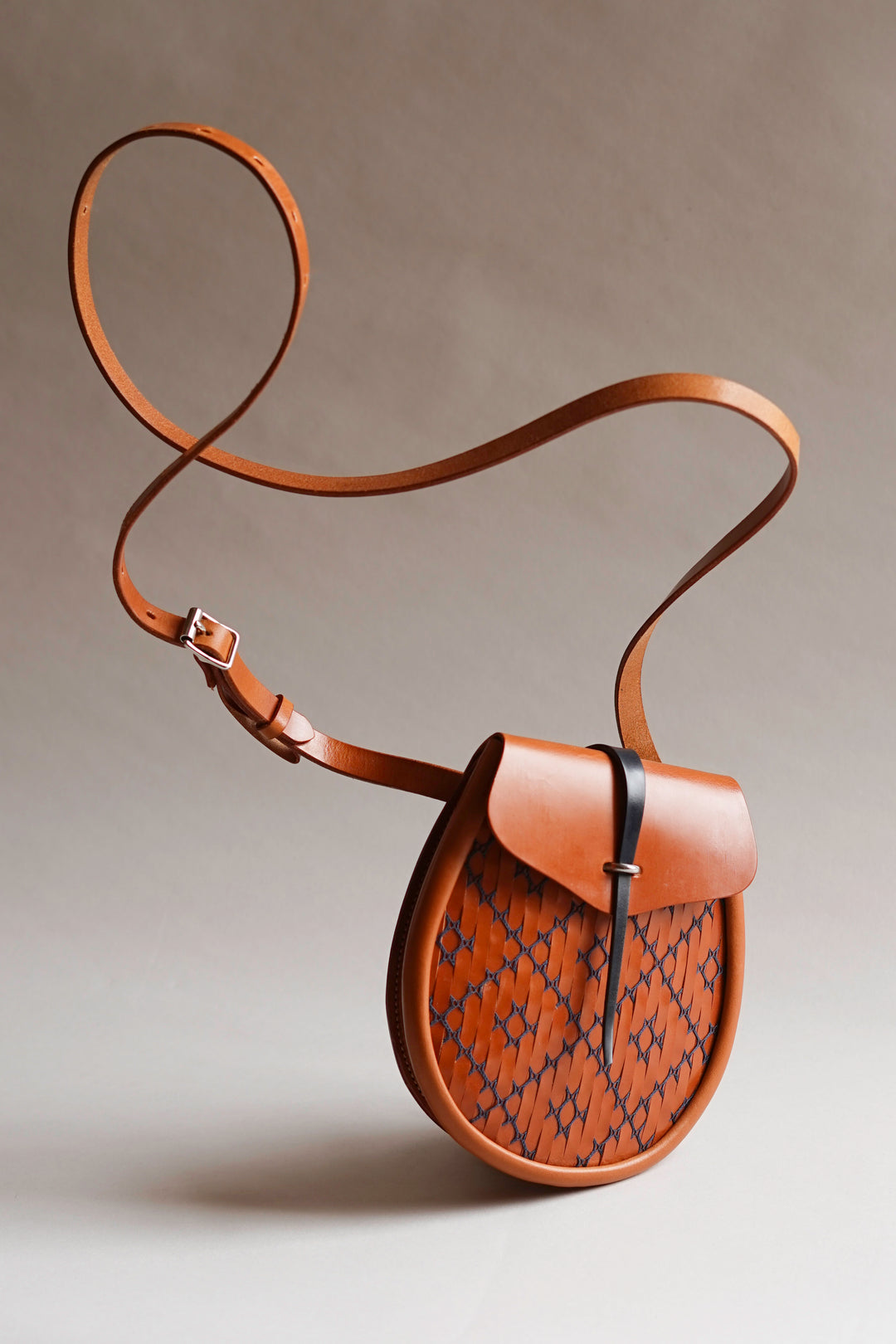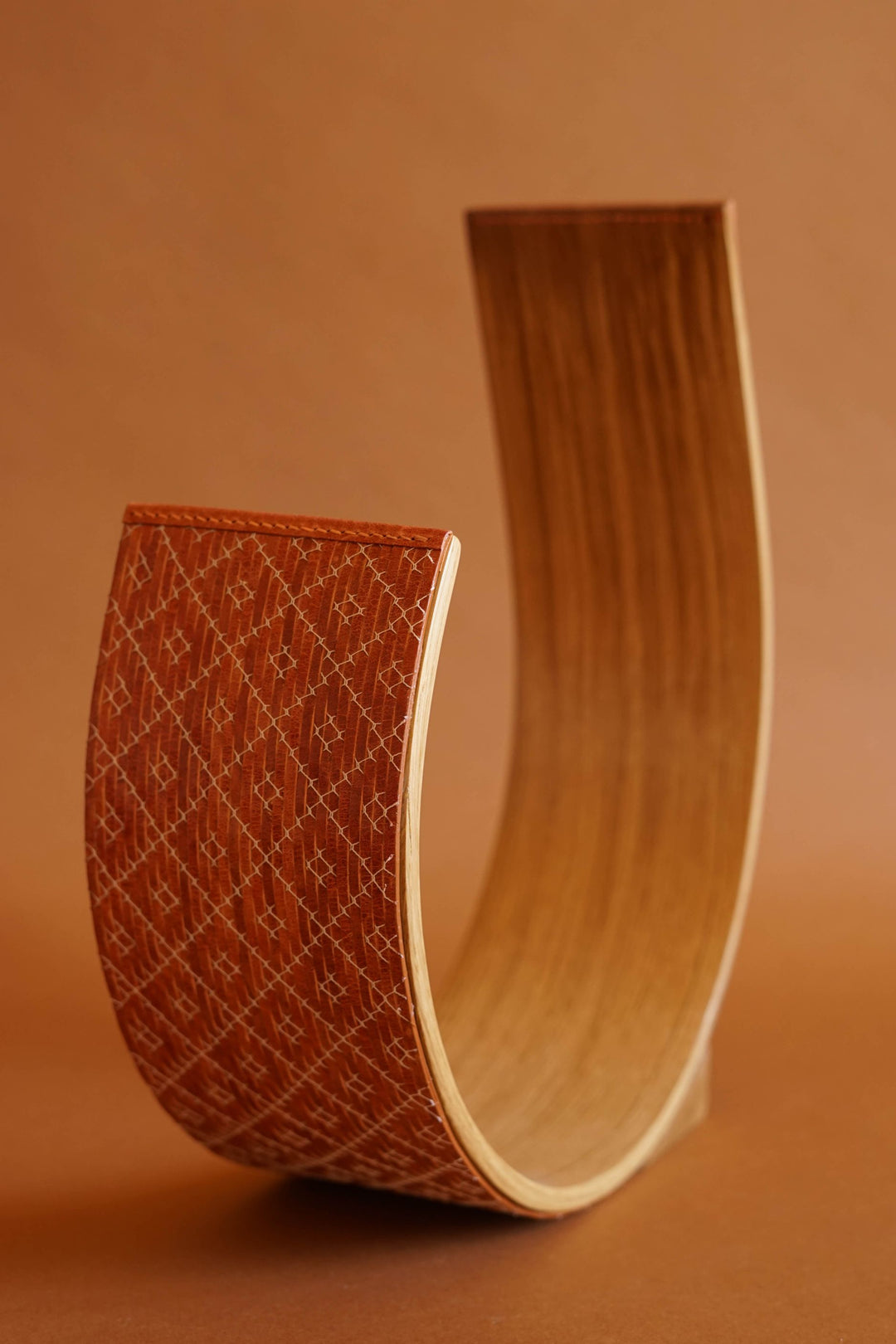Born and raised in the Highlands of Scotland, Iseabal is inspired by traditional craft skills that she grew up with, from basket-weaving to boatbuilding to roof-thatching. Her handwoven leatherwork is a labour of love; a time-consuming process that is meditative in its intricacy. Both her practice and her life in the Highlands are acts of slowing down and taking a step back from day-to-day life. Iseabal describes working by hand as deepening her understanding of the materials she uses. The organic process of vegetable tanning leather results in a unique patina which changes over time, dependent on how it’s handled. Her practice originated from a desire for zero-waste. By weaving very thin strips of leather with cotton, she can use the entire hide with almost no wastage. Sourcing locally not only ensures a lower carbon footprint, but also a better knowledge of supply chains and those within it. Iseabal’s work weaves together environmental values, a modern aesthetic based on time-honoured techniques and materials, with the landscape that is a constant inspiration.
What value does craft have in daily life?
At its very essence, craft brings joy to our daily lives. Often, by combining functional beauty with the personal, craft bridges the gap between design and art. Craft in its truest form has limited scalability, and as a result retains the meaning, character and individuality that can be lost in design. When we are surrounded by craft, our daily lives and the smallest of tasks also become imbued with meaning. A beautifully forged fire poker made by a fifth generation blacksmith or a kitchen knife with a walnut handle. A favourite mug that could never be replaced exactly, a well-worn, beloved fair isle jumper. Craft can elevate our everyday experiences. It reminds us to stop and notice, to be present, and to find joy in the day to day.
What does Scottishness mean to you?
A question I will spend the rest of my career trying to define!
Scotland's landscape varies from place to place, even from glen to glen. There are cultural differences between east and west, north and south. Yet we are all bound together by our unspoken, unarticulated, understanding of Scottishness: a deeply rooted sense of identity.
My practice is led by this intangible power, in ways I'm often unaware of, and others that I can now see clearly. It is my landscape that brings me my truest joy and impacts my sense of self the most. The objects that appeared throughout my life have also steered and defined my practice though - fisherman's creels, wicker baskets, clinker rowing boats, thatched roofed houses, all of our furniture made in the garden shed (because it was quicker than waiting for a delivery to the Highlands). There's a natural, perhaps simple, beauty to it all, an elegance and a solidity.
As I define my own understanding of Scottishness within my practice, I see other makers doing the same, in different mediums. I recognise a shared vision between us that encompasses our heritage, but also seeks to celebrate our present and our future.
Come and visit us at Bard in Leith to see Isaebal’s work, or get in touch with us directly.


